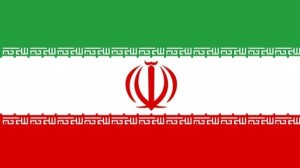I.R. Iran’s Foreign Investment

Investment in Iran
we provide the following Services to the Foreign Investors in Iran :
a) Corporation formation
b) Payroll Processing and Individual Income Tax
c) Social Benefit Administration
d) Employment Services & Employee Leasing
e) Legal Advisory and Documents
f) Expatriate Services
The government of I.R. Iran welcomes foreign investments and urges all the foreign investors to attentively peruse Iran’s Foreign Investment Promotion and Protection Act (FIPPA) and its executive bylaws to know their own rights and be informed of the facilities and protections they may enjoy as well as the legal obligations and requirements caused by investing in Iran.
Islamic Republic of Iran with an area of 1/648/195 sq.km, having 15 neighbors and nearly 75 million populations has been located in South- West Asia. The country neighbors with Turkey and Iraq in west, Afghanistan and Pakistan in East, Armenia, Azerbaijan, Russia, Kazakhstan and Turkmenistan in North and Kuwait, Saudi Arabia, Qatar, Bahrain, United Arab Emirates and Oman in South through Persian Gulf and Oman Sea. Therefore, Islamic Republic of Iran, as a strategic country, has got common borders with states of ESCWA in South and West, SAARC in East and CIS and Caucasus as well as UNECE in North
A Review of the Iranian Tax System
1. Tax Bases and Rates
The Iranian tax system is divided into two general categories of direct and indirect taxes. The share of direct taxes from the total tax revenues is almost 68% currently. There are two major types of direct taxes including income taxes and property taxes. Each category of direct taxes, in turn, is divided into sub-parts. Indirect taxes include taxes on imports and Value Added Tax (VAT). Taxes on imports are currently collected by the Iranian Customs and are not within the jurisdiction of INTA. Table 1 briefly shows various types of taxes in the Iranian taxation system
2. Taxation from foreign investors in Iran
Direct Taxes
All non-Iranian real or legal entities for the income earned in Iran and also for the income gained through granting of license or other rights, technical and educational assistance or movie contracts in the territory of Iran are subject to taxation. Depending on the type of activity of the foreign investor, various taxes and exemptions are applicable, including profit tax, income tax, property tax, etc.
Foreign investors in Iran enjoy the same supports and privileges that are offered to the Iranian investors. This means both Iranian and foreign investors pay the same amount of taxes. Tax exemptions and discounts are also equally granted to domestic and foreign investors.
Since foreign investments are usually active as legal entities, we will here under focus on rules and regulations for Corporate Income Tax.Corporate Income Tax
a) General Issues
Foreign legal entities residing abroad shall be taxed at the flat rate of 25% in respect of the aggregate taxable income derived from the operation of their investment in Iran or from the activities performed by them, directly or through the agencies in Iran.
The legal entities shall not be subject to any other taxes on the dividends or partnership profits they may receive from the capital recipient companies.
Legal entities are obligated to, even within the exemption period, submit declaration and profit and loss balance sheets, provided from their official statutory books, maximum four months after the tax year (March 21 each year until March 20 next year) along with the list of partners and shareholders, their shares and addresses to the tax department within the area of the activity of the legal entity. If these legal entities do not submit the documents within the stipulated time span, the tax exemption will be null and voidb) Exemptions The Direct Taxation Law and other pertinent legislation’s have considered certain exemptions for the legal entities as table
Highlights of Tax Exemptionsc) Deductions
Expenses which are deductible in the assessment of taxable income are listed in the Direct Taxes Act. These expenditures must be supported to a reasonable degree by documentary evidence and are exclusively connected with the earning of income during the year in question.
The categories of deductible expenditure are as follows:
Deductible Expenses Other expenses that are not referred to in the above Table, but are related to the earning of the enterprise’s income, shall be accepted as deductible expenses on basis of the proposal of the INTA and approval of Ministry of Economic Affairs and Finance.
d) Losses
Losses sustained by all taxpayers engaged in trading and other activities are accepted by the tax authorities; will be carried forward and written off against future profits for a period of three years.
e) Withholding taxes
● Five percent of every contract payment may be withheld by the payer and accounted for to tax authorities. Such a withheld tax constitutes an advance payment of the final tax due.
● The payers of salaries are obliged, when paying or allocating the same, to compete and withhold therefrom the applicable taxes and to remit, within thirty days, the deducted amounts together with a list containing the names and addresses of recipients and the amount of the payments, to the local tax assessment office.
f) Depreciation
Depreciation of assets is deductible in the assessment of taxable income. Depreciation rates range from 5% to 100% and the period over which assets may be depreciated ranges from 2 to 15 years.
3. Value Added Tax (VAT) in Iran
The VAT in Iran is levied on the sale of all goods and services and their imports, except 17 items listed in Article 12 of the VAT Act (VATA) as the exempted ones. The VATA, however, does not include the export of goods and services through official Customs gates. Therefore, the taxes paid for the export of goods and services will be refundable by submitting the Customs clearance sheets and valid documents.
Currently, the VAT rate stands at 6% (VAT rate for two special goods of cigarettes and jet fuel is relatively higher). To reduce the country’s dependency on oil revenue, the Law on the Fifth Five-Year Development Plan provisioned an annual one-percent increase in the VAT rate to put it at 8% at the end of the Plan, i.e. 2016.
Economic activities in free trade and industrial zones are exempted from the VAT.
4. Agreements for the Avoidance of Double Taxation
To facilitate cooperation between Iranian and foreign residents and to promote trade and economic exchanges with foreign countries, the Government of the Islamic Republic of Iran has applicable mutual Agreements for the Avoidance of Double Taxation.

